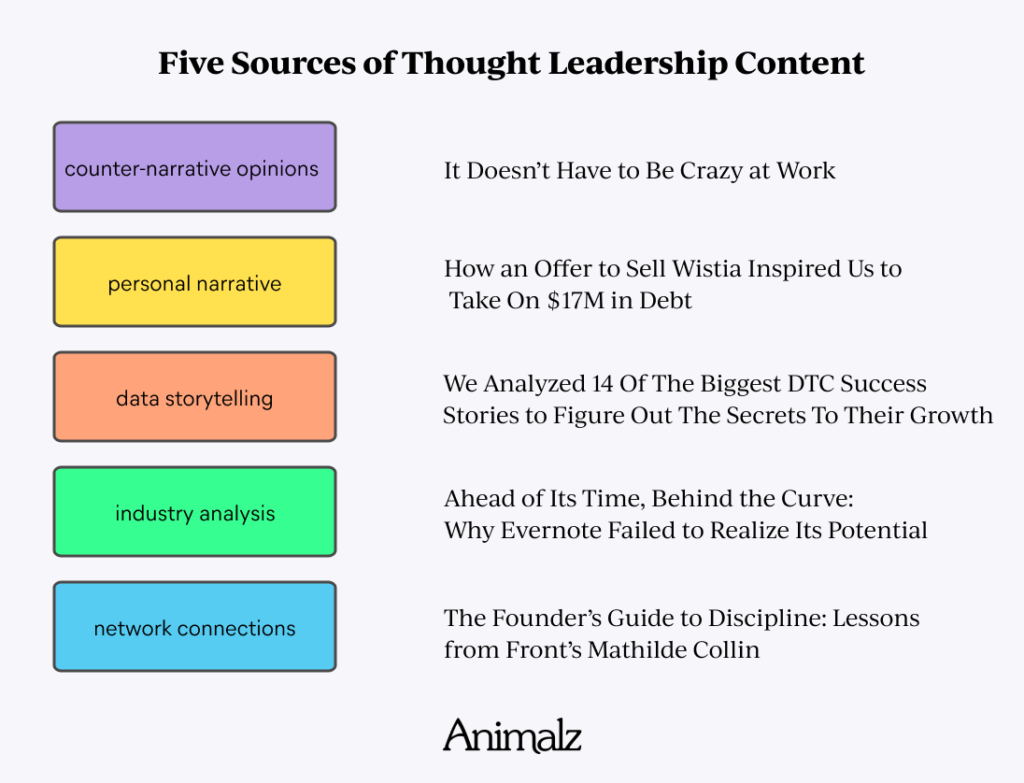If blogging is how you go about generating website traffic and leads, do you always have enough compelling blog post ideas that will help you fill your editorial calendar? This article will make it simple for you to complete this loophole in the content development process and help you creating more compelling content to help you meet your business goals.
By producing interesting content that benefits your audience, you will be able to set yourself apart from the competition. With every blog post, you want to be able to connect with your audience and motivate them to take action. In order for your blogs to rank higher on search engines, you also want to make sure that they fulfill user purpose.
We all understand, however, that even for seasoned companies, coming up with blog post ideas that engage readers and encourage them to take action can be challenging. If you are looking for new blog ideas that get you the best results, you do not need a huge list. Here are some suggestions for you:
Begin by First Understanding Your Target Audience

Before we talk about blog post ideas, we need to first talk about your target audience, and how everything you blog about should be hyper-focused on them.
More traffic will probably be attracted by that type of content that has a higher quality, but that does not guarantee that the traffic will be of a profitable nature. Making sure your reader understands what you’re selling is the best approach to raise your chances of turning visitors into paying clients. This is why understanding the target market that actually requires your product or service is critical.
That is why, ideally, creating custom content should start with a deeper understanding of your target audience. See everything you can about their likes, dislikes and more. Then you can focus on creating blog posts that attract readers who not only like your material, but want to do business with you.
Additionally, identifying your target audience might be a terrific approach to generate different kinds of blog post ideas. The material that your target audience is currently consuming can provide you inspiration. For instance, podcasts they can listen to, books they can read, and conferences they attend can all be excellent informational sources from which you can get ideas for fresh blog post ideas, making the process of content creation easier for you.
That being said, how do you understand your target audience? Here are some quick tips
- Throughly brainstorm and create buyer personas
- Ask for feedback from your customers
- Use web analytics tools to understand the type of traffic that converts
- Research your competitors
- Look at influencers in your space and try to understand who they are targeting for ideas
Moving forward, please remember that all of the below blog post ideas should be laser-focused on the perspective of your target audience.
67 Blog Post Ideas for Increased Traffic and Leads
If you are ready to take your blogging a step further and drive more traffic to your website, here are some great ideas that you should try:
SEO-Influenced Blog Post Ideas

SEO is important for improving your website’s ranking on search engines. When you optimize your blog posts for SEO, you are increasing visibility to allow more people to find your products or services quickly on the internet. If you are to drive traffic and increase leads, writing your blog posts with SEO in mind is paramount.
Some tips for SEO-influenced blog content include:
1. Conducting thorough keyword research and using keyword ideas strategically in your posts
2. Targeting blog post ideas that your competitors rank high in search engines for
3. Writing link-worthy posts to earn backlinks
4. Writing related yet differing posts to those posts of yours that already rank high in search engines
Further Reading: 17 AI SEO Software Tools to Help Your Content Rank
Engaging and Interactive Content Ideas
Most people browsing the Internet are doing it for fun and not necessarily buying something. Why not bring your fun blog post ideas to life so that your readers will engage and interact with you? This can help you create stronger connections with your customers to increase traffic and leads. Here are some blog post ideas for creating engaging and interactive content:
5. Invite your audience to interact with you in an “Ask me anything” evergreen post. Make sure you share your answers honestly and candidly
6. Share interviews with popular influencers that you use to promote your business
Is Your LinkedIn Not Delivering Results?
Just released: my new book to help professionals, entrepreneurs, and business owners maximize LinkedIn for real growth.
With years of LinkedIn expertise, Maximizing LinkedIn for Business Growth offers actionable steps to build your brand, expand your network, and drive results.
Start leveraging LinkedIn like never before—grab your copy now! Click the cover or button below to buy on Amazon.
7. Share about an upcoming event that gives readers the chance to engage with you or your company personally
8. Invite your readers to participate in a contest, challenge or giveaway through a blog post
9. Share some of the best jokes and quirky sayings about your industry and invite your readers to add some of their own
10. Compare your industry or business strategies to a popular movie or song
11. Share your daily work playlist explaining the reason behind every song choice
12. Rant about a bad experience to invite discussion around the same
Further Reading: 7 Reasons Interactive Content is the Future of Content Marketing
Trending and News-Related Topics
How are current events in your country and globally affecting your industry? You can position yourself to educate people in your industry on how these things affect them, as well as how they can tailor their businesses to leverage the changes or beat the potential setbacks. Besides portraying you as an authority, it can earn you backlinks from relevant websites such as news outlets.
Here are some news-worthy types of blog post ideas you can try:
13. Break down recent studies and research, highlighting what they mean for your industry
14. Share about world events and how they impact the industry
15. Highlight statistical facts about a news release that affects your industry
16. Write about updates shared in a recent conference that you attended
17. Define new terms and acronyms in the industry
18. Write about the benefits of emerging technology in your industry
Thought Leadership and Opinion Pieces

Publishing your opinion regarding what’s happening in your industry sets you apart as the go-to source for everything going on in the industry. Since people like staying updated, you can expect spikes in website traffic. This also builds your credibility and shows your thought leadership among others in your space.
Here are some things that you can share:
19. Technological developments that will shape the industry in the near future
20. Top hotspots where your industry is thriving
21. Create a trends report for new trends in the industry
22. Top skills that will be most in demand in your industry in the next decade
23. Write reviews of products and services related to your industry
24. Write an overview of opinions from industry experts
25. Give your opinion on a subject that has been covered by someone else recently
26. Suggest events that people in your industry must attend and why
Collaborative and Guest Post Ideas
Collaborating with other people in your blog posts allows you to leverage the following that the other party has built over the years. This gives your website exposure to a wider audience, increasing blog traffic and leads. It also allows you tap into diverse perspectives adding more value to your blog’s content. Here are examples of collaborative and guest post ideas to get you started:
27. Interview other people such as experts or influencers in your blog
28. Appear as a guest for other blogs similar to your blogging niche and ask for permission to republish that blog post on your own blog
29. Partner with another thought industry leader to write popular posts in a series
30. Ask another business related to your blog niche to write a review of your products. Offer them a free product or a month’s access to your service for them to give them the necessary experience
31. Invite some of your most passionate customers to guest blog for you
Further Reading: Guest Blogging: Trick or Treat? Here’s What You Need to Know
Educational Content and Evergreen Blog Post Ideas

Another great idea is to provide educational content to your readers. Blog about topics and information that your target audience wants to know – or needs to know – to generate demand for your products or services. Providing information that adds value to your customers shows that you are not there to solely get their money. Furthermore, today’s customers don’t like reading content that is overtly selling to them. Educational blog posts help you sell your products indirectly and convince them to buy.
The good thing about educational content is that it is always evergreen. The information therein can stay accurate and relevant for a long period of time. This means that it will continually show up in search results in addition to positioning you as an expert in your field.
Writing educational blog posts is a good way to boost your link-building strategy. Other businesses can use your educational blog posts as a reference, earning you valuable backlinks to your website. The more backlinks you get, the more you rank higher for relevant search terms.
Some educational blog posts ideas include:
32. Provide step-by-step guides to accomplish something
33. Write problem-solving guides to give solutions to your readers’ pain points
34. Give tips and tricks that your readers can use to get the best results in something
35. Invite experts to guest post or blog about expert interviews to offer expert insights on different topics
36. Offer recommendations for the best techniques and tools that you use
37. Explain complex concepts in a simple way that they can understand
38. Write about projects and exercises that your readers can do to help them put into practice what they have learned
39. Give dos and don’ts for topics related to your industry
40. Do case studies of something you did recently such as a marketing campaign and what you learned from it
Further Reading: 8 Examples of What Qualifies As Evergreen Content – and 10 Examples of What Doesn’t
Storytelling Blog Content Ideas

Most people love reading stories that they can relate to. It is human nature to want to gravitate more towards fun and interesting things. And, storytelling allows you to answer customer queries in an interesting manner, helping you to more easily capture your readers’ attention. Also, by telling relevant stories, you are helping your readers connect more deeply with your business. Moreover, writing about personal stories creates a sense of trust, which is vital in building meaningful relationships.
Moreover, if you write a brilliant story that evokes the right emotions, it can move your readers to take action. Stories are also memorable. They can help your brand stay on top of your readers’ minds for a long time, increasing the chances of converting and bringing referral business.
What storytelling blog post ideas can you try?
41. Share how you entered the industry. What inspired you, why you did do it, and struggles that you had to overcome
42. Have your employees tell stories about their experiences working in the organization
43. Write about customer success stories. Let them narrate how your product or service has helped them achieve their goals
44. Share stories on your organization’s team-building activities
45. Share the story behind your logo and brand name
46. Write a story of how you recovered from a business failure
Further Reading: Brand Storytelling: How to Tell Stories That Will Increase Conversions
Business-Promoting Blog Post Ideas
Besides adding value and entertaining your readers, your ultimate goal is to promote your business and drive sales. However, the modern consumer doesn’t like being sold to. You need to write a series of blog posts that help you promote your business tastefully without sounding like you are overtly selling to them. Here are some popular topics that can help you do that:
47. Share customer profiles for your best and most passionate customers. You will be promoting their work, which is vital in strengthening your relationship and encouraging others to do business with you
48. Give readers the highlights of an industry event that you attended recently
49. Talk about what’s new about, or what you are doing to improve, your products or services
50. Share your product’s online reviews in a targeted blog post
51. Create an FAQ for your products
52. Give comprehensive guides and how-tos to explain how to use your products
53. Share with your readers how your products or service can help them address their pain points
54. Explain creative ways that your readers can use your products
Controversial Blog Post Ideas
If you want to drive massive traffic to your website, writing a controversial topic can help you do that. People love someone who is bold enough to speak his or her mind without minding what others will say. However, be careful not to overdo it or insult someone when writing controversial blog posts. Also, make sure to research the topic that you plan to blog about thoroughly.
Some blog post ideas that you can try include:
55. Sharing your reaction to a recent blog post that you disagree with
56. Writing a myth vs. fact blog post
57. Writing a response to a controversial tweet written about your industry. You can use Twitter’s advanced search to find tweets that you can respond to
58. Setting the record straight on popular misconceptions about your industry
59. Highlighting top things that you would like to change in your industry
Further Reading: 19 Engaging Real Estate Blog Ideas to Boost Your Realtor Business
Inspirational Blog Post Ideas

If you can inspire someone to take action, you can develop a deeper relationship with someone that will be more likely to take action on buying your own products and services as well. You can write blogs that help your readers experience the change that they crave in their lives. This not only adds value for them but entices them towards taking your desired action in a subtle way. Here are some popular blog post ideas to inspire your readers to take action:
60. Share about your daily schedule or routine to give insights on how they can improve their own, especially when your own product or service is a part of it
61. Explain your mission statement and explain its role in shaping the future of your business
62. Talk about your personal and company values that form the person you are and the brand that you have created
63. Share about your goals for the year and how you plan to achieve them
64. Review your goals for the past year highlighting how you achieved them and what hindered you from achieving others
65. Talk about the best advice you received and how it helped change your life and business
66. Write about the biggest lesson you have learned in the course of running your business
67. Talk about the causes that you support and what that means to you
Take Action on These Blog Post Ideas
It is possible to get to a point where you don’t have any ideas left for your blog, especially if you write regularly. But, do not worry, even the best bloggers experience that. The above suggestions can get you thinking of your next blog post ideas. Now it’s time to compile those ideas that you plan to blog about and put them inside a content calendar. Executed properly, you can expect a boost in website traffic and leads.
Author Bio
Enis Azemi is an experienced off-page SEO specialist at Tactica with a proven track record of boosting website rankings and increasing organic traffic. With 2 years of experience in the industry, Enis has a deep understanding of the latest SEO trends and techniques, and uses this knowledge to develop customized strategies that deliver results. He is highly skilled in link building, content marketing, social media marketing, and other off-page optimization techniques, and is committed to staying up-to-date with the ever-evolving world of SEO.
Hero photo by Matthew Osborn on Unsplash










I think I’m going to try and make an ultimate guide post. Thanks Konrad!